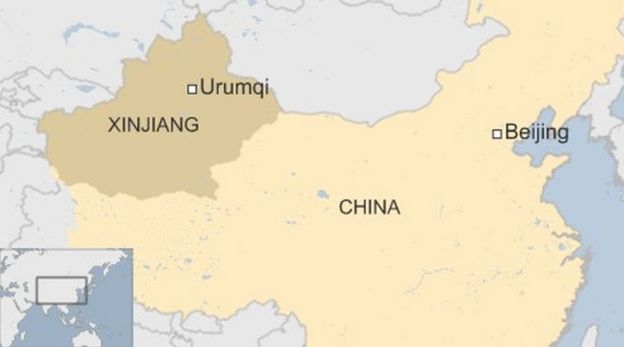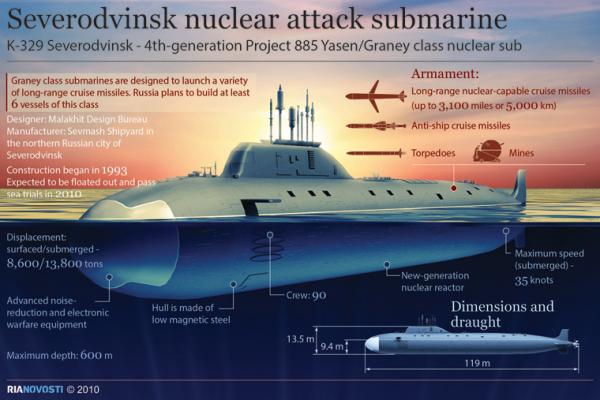http://www.timebomb2000.com/vb/show...th-Korea-fires-missile-per-White-House-review
For links see article source.....
Posted for fair use.....
http://www.theaustralian.com.au/bus...e/news-story/bd982b32718357c5a842bb279be45b6a
WALL STREET JOURNAL
US military strike threat if North Korea fires missile
Carol E. Lee, Alastair Gale
The Wall Street Journal
12:00AM March 3, 2017
An internal White House review of strategy on North Korea includes the possibility of military force or regime change to blunt the country’s nuclear-weapons threat, people familiar with the process said, a prospect that has some US allies in the region on edge.
While President Donald Trump has taken steps to reassure allies that he will not abandon agreements that have underpinned decades of US policy on Asia, his pledge that Pyongyang would be stopped from ever testing an intercontinental ballistic missile — coupled with the two-week-old strategy review — has some leaders bracing for a shift in American policy.
The US review comes as recent events have strained regional *stability. North Korea launched a ballistic missile into the Sea of Japan last month, and the *estranged half brother of North Korean leader Kim Jong-un was assassinated in Malaysia.
Chinese and North Korean *officials are holding talks in Beijing, the first known high-level meeting in nearly a year, and *Beijing recently curtailed coal imports from North Korea.
US officials have underscored the possible military dimensions of their emerging strategy in recent talks with allies, according to *people familiar with the talks. During Japanese Prime Minister Shinzo Abe’s two-day summit with Mr Trump last month, US *officials stated several times that all options were under consideration to deal with North Korea, *according to a person familiar with the talks.
It was clear to the Japanese side that those options encompassed a US military strike on North Korea, possibly if Pyongyang appeared ready to test an ICBM, this person said. The Japanese side found that scenario “worrisome”, he said.
US allies in recent years have closely aligned with Washington in trying to increase diplomatic and economic pressure on Pyongyang to force it to drop its nuclear program.
But the new US policy review has generated anxiety in Japan and South Korea about a radical shift. After North Korea said earlier this year it was ready to test an ICBM, Mr Trump wrote on Twitter, “It won’t happen!”
Deputy National Security Adviser K.T. McFarland convened a meeting with national-security officials across the government two weeks ago and asked them for proposals on North Korea, including ideas that one official described as well outside the mainstream.
The request was for all options, ranging from US recognition of North Korea as a nuclear state to military action against Pyongyang. Ms McFarland’s directive was for the administration to undergo a comprehensive rethink of America’s North Korea policy.
The national-security officials reported back to Ms McFarland with their ideas and suggestions two days ago.
Those options now will undergo a process under which they will be *refined and shaped before they are given to the President for consideration.
The heightened prospect of US military action in North Korea could encourage China, which fears the fallout of a military confrontation with its neighbour, to take steps Washington has long sought to choke off Pyongyang’s economic lifeline.
In the wake of Mr Trump’s election, leaders in Tokyo and Seoul have sought to intensify the existing US strategy of exerting economic and diplomatic pressure against North Korea.
“We will make sure that the North changes its erroneous calculations by further enhancing sanctions and pressure,” South Korean acting President Hwang Kyo-ahn said on Wednesday.
South Korea and the US kicked off major annual military exercises on Wednesday, part of a long-running strategy of prioritising defensive military preparedness to ward off North Korean aggression.
After North Korea tested a ballistic missile last month just as Mr Abe and Mr Trump were meeting in Florida, the Japanese leader called for Pyongyang to comply with a UN ban on such tests and said Tokyo and Washington would strengthen their alliance.
In his own brief remarks after Mr Abe, Mr Trump didn’t mention North Korea, saying only that the US “stands behind Japan, its great ally, 100 per cent”.
Japan is concerned it could get sucked into a regional conflict by a US military strike on North Korea, said Tetsuo Kotani, a senior fellow at the Japan Institute of International Affairs, a Tokyo think tank.
Another fear for Japan is a scenario in which the US instead holds talks with North Korea and reaches a deal that would lead to Washington disengaging from the region, he said.
Under its pacifist constitution, Japan remains heavily dependent on US military support, not only to counter North Korea, but also China, which has stepped up a *territorial challenge against Japanese-administered islands in the East China Sea.
“Direct talks between Mr Trump and Kim Jong-un would be a nightmare scenario for Japan,” Mr Kotani said.
Mr Trump has recently stated the US commitment to defending both Japan and South Korea to leaders of both countries.
As annual military exercises were set to begin, US Defence *Secretary Jim Mattis spoke to South Korean Defence Minister Han Min-Koo, emphasising that “any attack on the United States or its allies will be defeated, and any use of nuclear weapons will be met with a response that is effective and overwhelming”, said Pentagon spokesman Jeff Davis.
The US is in the process of installing advanced missile defences, known as the Terminal High Altitude Area Defence system, in South Korea.
As part of that, South Korea said this week that it has completed a transfer of land needed as a station for the system, Captain Davis said.
The Wall Street Journal
For links see article source.....
Posted for fair use.....
http://www.theaustralian.com.au/bus...e/news-story/bd982b32718357c5a842bb279be45b6a
WALL STREET JOURNAL
US military strike threat if North Korea fires missile
Carol E. Lee, Alastair Gale
The Wall Street Journal
12:00AM March 3, 2017
An internal White House review of strategy on North Korea includes the possibility of military force or regime change to blunt the country’s nuclear-weapons threat, people familiar with the process said, a prospect that has some US allies in the region on edge.
While President Donald Trump has taken steps to reassure allies that he will not abandon agreements that have underpinned decades of US policy on Asia, his pledge that Pyongyang would be stopped from ever testing an intercontinental ballistic missile — coupled with the two-week-old strategy review — has some leaders bracing for a shift in American policy.
The US review comes as recent events have strained regional *stability. North Korea launched a ballistic missile into the Sea of Japan last month, and the *estranged half brother of North Korean leader Kim Jong-un was assassinated in Malaysia.
Chinese and North Korean *officials are holding talks in Beijing, the first known high-level meeting in nearly a year, and *Beijing recently curtailed coal imports from North Korea.
US officials have underscored the possible military dimensions of their emerging strategy in recent talks with allies, according to *people familiar with the talks. During Japanese Prime Minister Shinzo Abe’s two-day summit with Mr Trump last month, US *officials stated several times that all options were under consideration to deal with North Korea, *according to a person familiar with the talks.
It was clear to the Japanese side that those options encompassed a US military strike on North Korea, possibly if Pyongyang appeared ready to test an ICBM, this person said. The Japanese side found that scenario “worrisome”, he said.
US allies in recent years have closely aligned with Washington in trying to increase diplomatic and economic pressure on Pyongyang to force it to drop its nuclear program.
But the new US policy review has generated anxiety in Japan and South Korea about a radical shift. After North Korea said earlier this year it was ready to test an ICBM, Mr Trump wrote on Twitter, “It won’t happen!”
Deputy National Security Adviser K.T. McFarland convened a meeting with national-security officials across the government two weeks ago and asked them for proposals on North Korea, including ideas that one official described as well outside the mainstream.
The request was for all options, ranging from US recognition of North Korea as a nuclear state to military action against Pyongyang. Ms McFarland’s directive was for the administration to undergo a comprehensive rethink of America’s North Korea policy.
The national-security officials reported back to Ms McFarland with their ideas and suggestions two days ago.
Those options now will undergo a process under which they will be *refined and shaped before they are given to the President for consideration.
The heightened prospect of US military action in North Korea could encourage China, which fears the fallout of a military confrontation with its neighbour, to take steps Washington has long sought to choke off Pyongyang’s economic lifeline.
In the wake of Mr Trump’s election, leaders in Tokyo and Seoul have sought to intensify the existing US strategy of exerting economic and diplomatic pressure against North Korea.
“We will make sure that the North changes its erroneous calculations by further enhancing sanctions and pressure,” South Korean acting President Hwang Kyo-ahn said on Wednesday.
South Korea and the US kicked off major annual military exercises on Wednesday, part of a long-running strategy of prioritising defensive military preparedness to ward off North Korean aggression.
After North Korea tested a ballistic missile last month just as Mr Abe and Mr Trump were meeting in Florida, the Japanese leader called for Pyongyang to comply with a UN ban on such tests and said Tokyo and Washington would strengthen their alliance.
In his own brief remarks after Mr Abe, Mr Trump didn’t mention North Korea, saying only that the US “stands behind Japan, its great ally, 100 per cent”.
Japan is concerned it could get sucked into a regional conflict by a US military strike on North Korea, said Tetsuo Kotani, a senior fellow at the Japan Institute of International Affairs, a Tokyo think tank.
Another fear for Japan is a scenario in which the US instead holds talks with North Korea and reaches a deal that would lead to Washington disengaging from the region, he said.
Under its pacifist constitution, Japan remains heavily dependent on US military support, not only to counter North Korea, but also China, which has stepped up a *territorial challenge against Japanese-administered islands in the East China Sea.
“Direct talks between Mr Trump and Kim Jong-un would be a nightmare scenario for Japan,” Mr Kotani said.
Mr Trump has recently stated the US commitment to defending both Japan and South Korea to leaders of both countries.
As annual military exercises were set to begin, US Defence *Secretary Jim Mattis spoke to South Korean Defence Minister Han Min-Koo, emphasising that “any attack on the United States or its allies will be defeated, and any use of nuclear weapons will be met with a response that is effective and overwhelming”, said Pentagon spokesman Jeff Davis.
The US is in the process of installing advanced missile defences, known as the Terminal High Altitude Area Defence system, in South Korea.
As part of that, South Korea said this week that it has completed a transfer of land needed as a station for the system, Captain Davis said.
The Wall Street Journal
Last edited:



